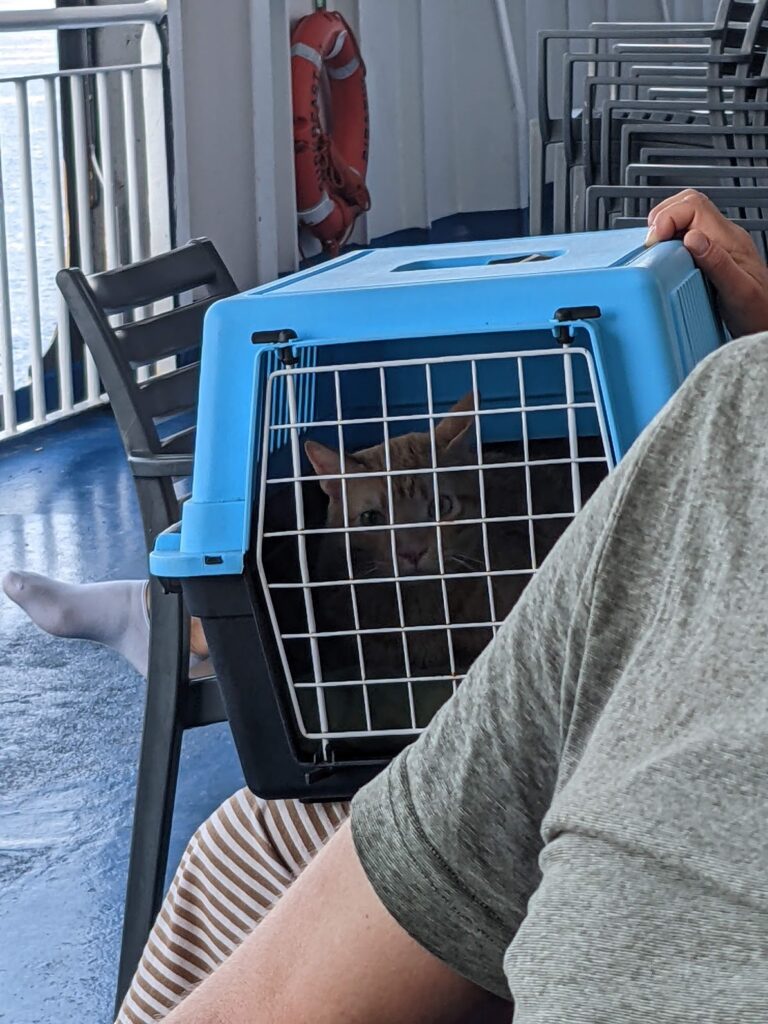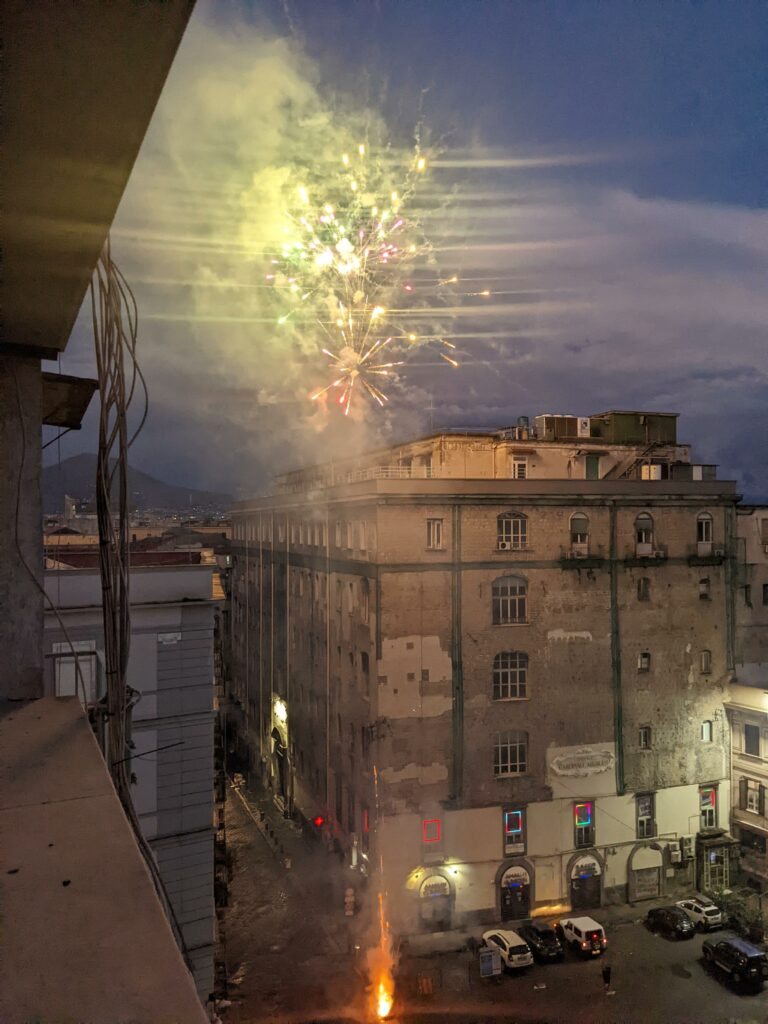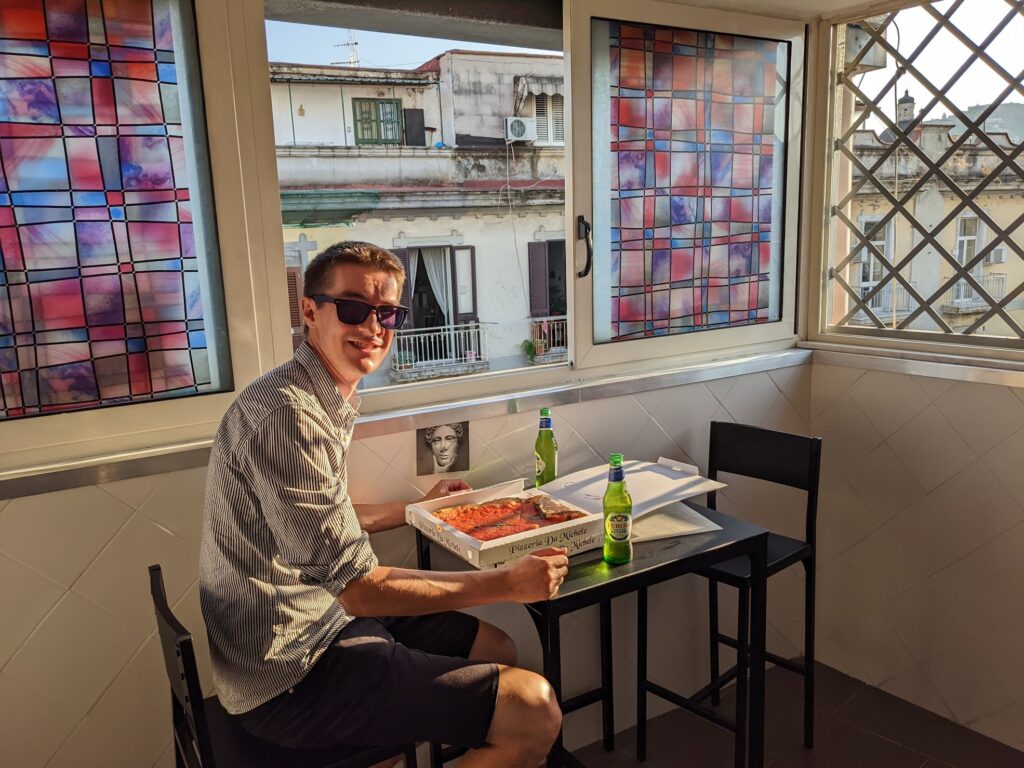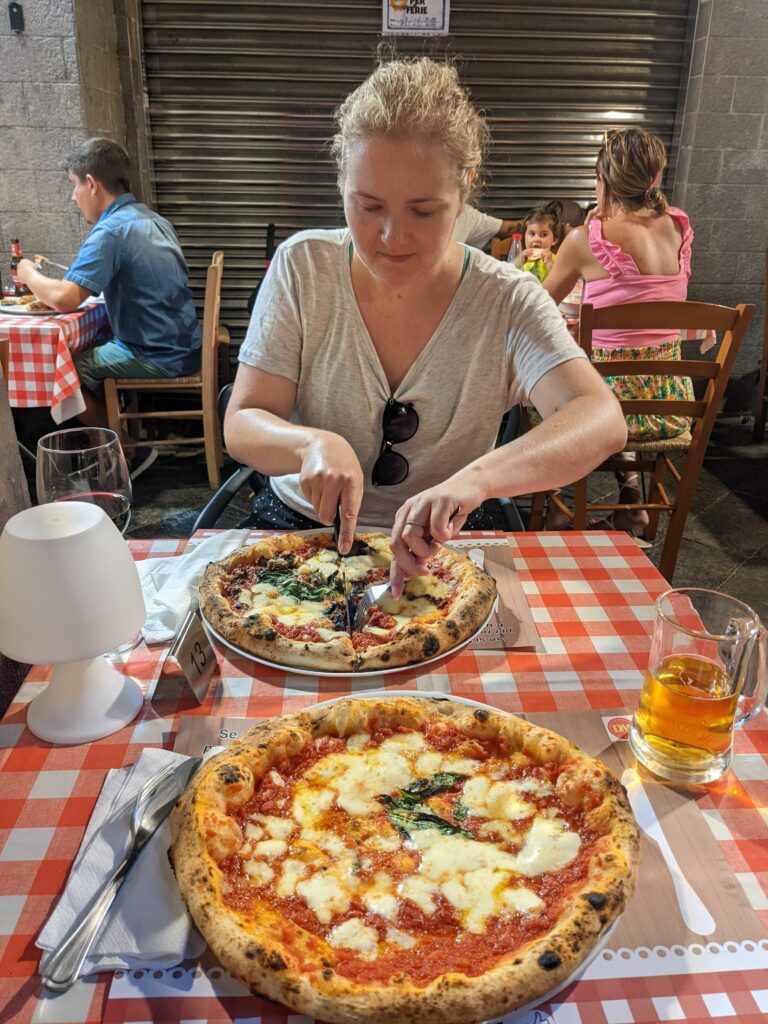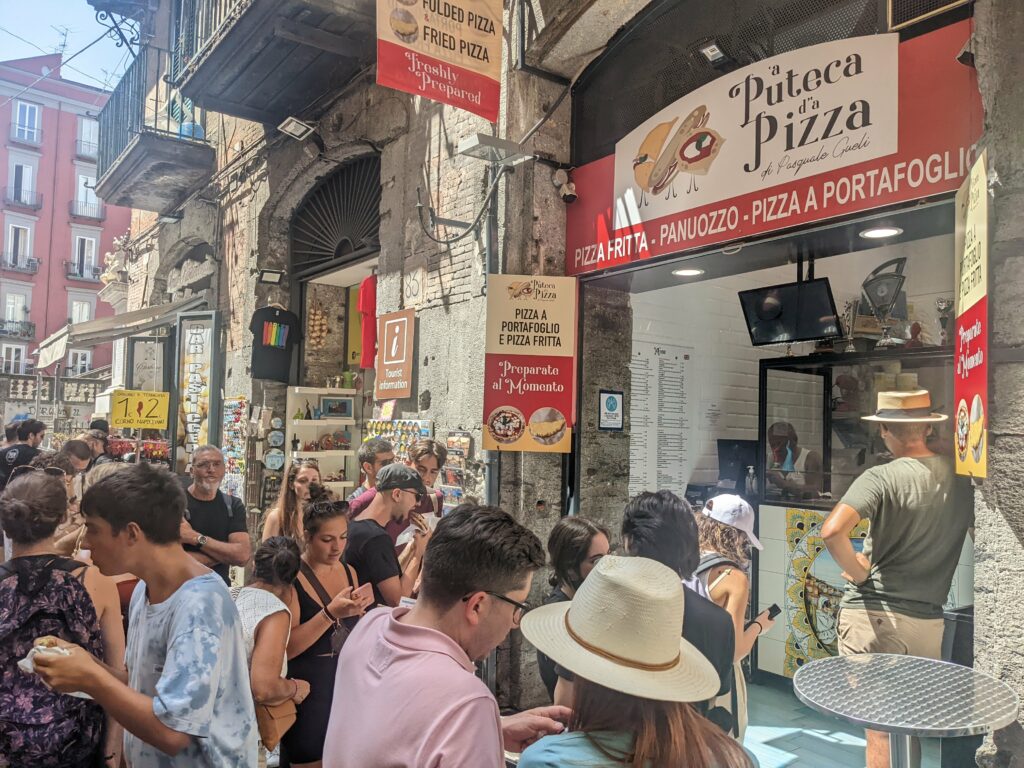The Acropolis is totally unmissable in Athens. All roads seemingly lead to it, and it looms over the city by day and glows through the darkness at night. As well as seeing it up close, we also ascended a couple of hills on opposite sides of the city to enjoy the view from all angles, despite what the weather threw at us.
Golden hour at the Acropolis
We chose to visit the Acropolis site itself at 6.30pm, shortly before sunset (and the site closing). We’d heard that it gets very busy in the middle of the day, so this seemed to avoid both the crowds and an early start for us; win-win! We entered the site from the quieter south-eastern entrance and made a bee-line for the Parthenon, heading up past the Theatre of Dionysus, the Temple of Asclepios, and finally arriving at the plateau via the impressive Propylaea entry way. By this point, the sun was already low enough in the sky to cast a beautiful golden glow across each of the temple ruins.
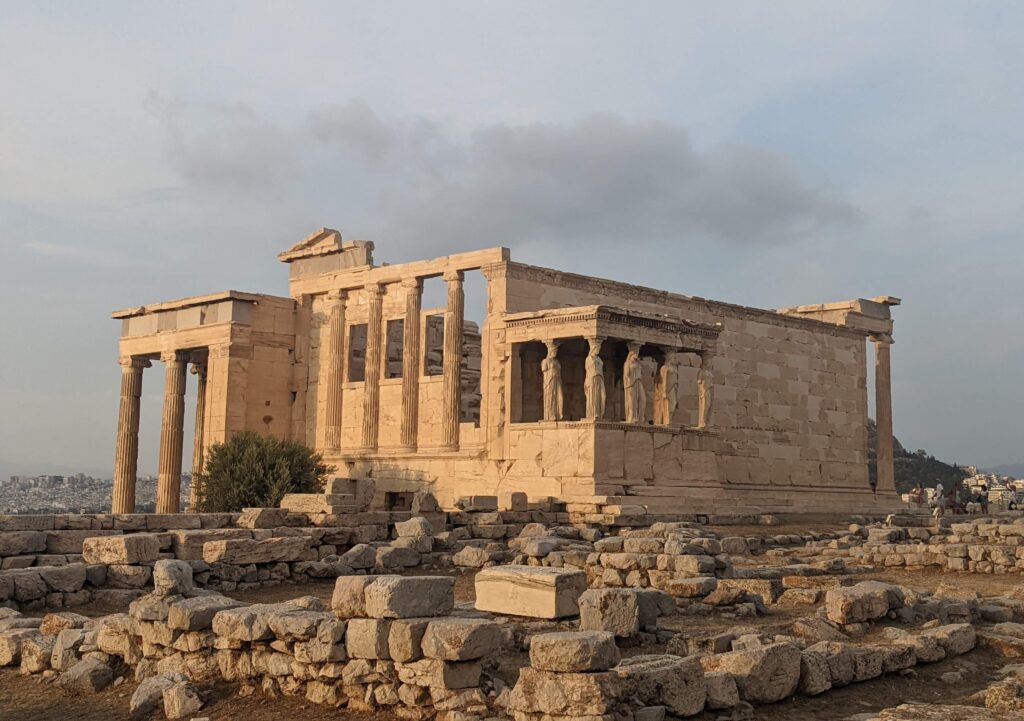
We spent a good half hour exploring both the Parthenon (below) and Erechtheion (above). I also managed to snap one of our finest selfies to date. By that, I mean a rare selfie that survived Sara’s regular culls of any photos that contain her.
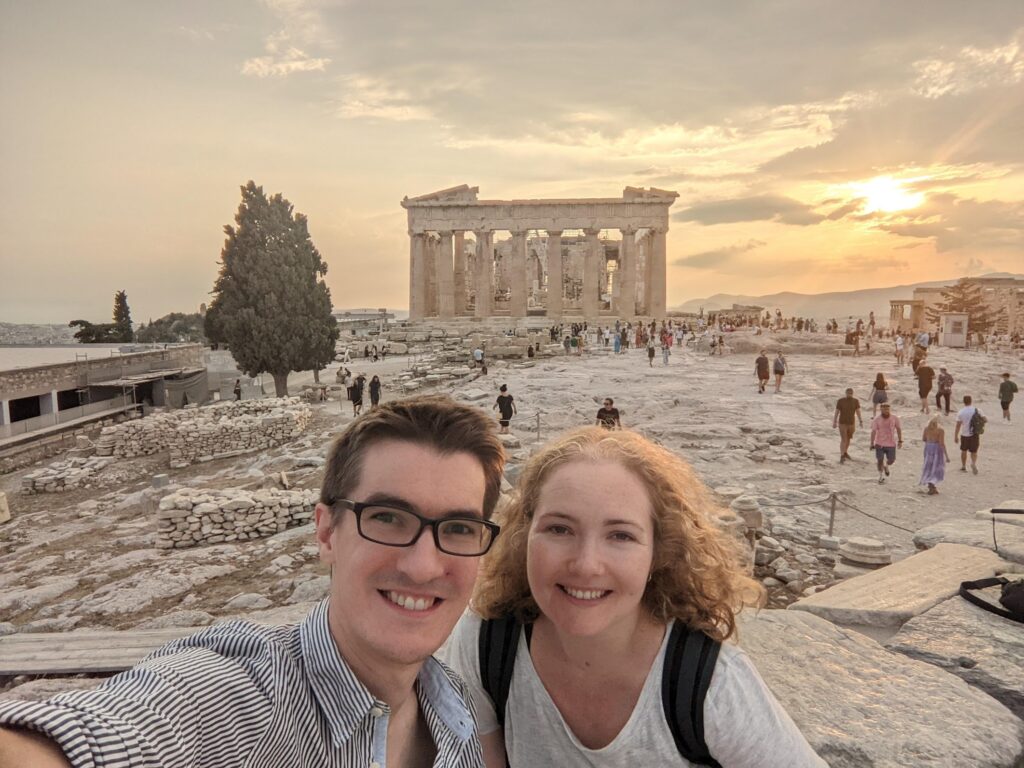
Biblical rain and sunset on Philopappos Hill
The next day, we’d planned to take a sunset stroll up Philopappos Hill, a mound just to the south-west of the Acropolis that we’d read had great views over the city. The one issue with this plan was the weather, as there were thunderstorms forecast throughout the afternoon. We’d made it as far as the very calm and semi-pedestrianised Iraklidon street when the heavens opened, so we took shelter in the nearest bar, and waited for it all to blow over. And it wasn’t long before the chalkboard outside the bar literally did blow over and was carried away by the torrent of water flowing down the street.
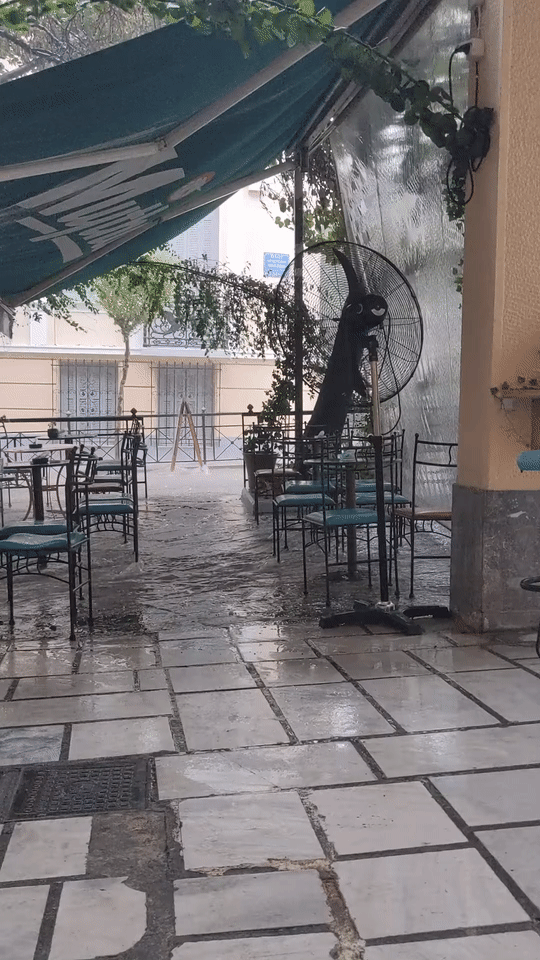
A few drinks later and the rain had started to clear, so we headed off towards the park. Halfway up the hill we came across a rather large church bell, and Sara (with the help of some dutch courage) tested it out. Surprisingly, the bell was incredibly loud, so Sara did the honourable thing and did a runner. Apologies to the people of Athens who set their watch by these bells.

Eventually, we made it to the top of Philopappos Hill and found a viewpoint overlooking the Acropolis. This time, we waited the sun to actually set and the lights to come on before moving on to dinner. The deluge earlier in the afternoon seemed to have scared off anyone with any sense, leaving us alone to enjoy the views. The remaining clouds even added some atmosphere to the evening sky. It was pretty magical.

Rain and shine at Lycabettus Hill
For our final Acropolis view we travelled to Lycabettus Hill, the highest point in Central Athens. We climbed up a handful of stairs through a quiet neighbourhood north-east of the Acropolis to reach the funicular railway’s lower station. Just after purchasing our ticket but before the train departed, an ominous rumble of thunder rolled across the city. We exchanged a glance and wondered whether this was a good idea at all, but our typical we’ve-come-this-far determination encouraged us to hop on the train shortly before it departed.
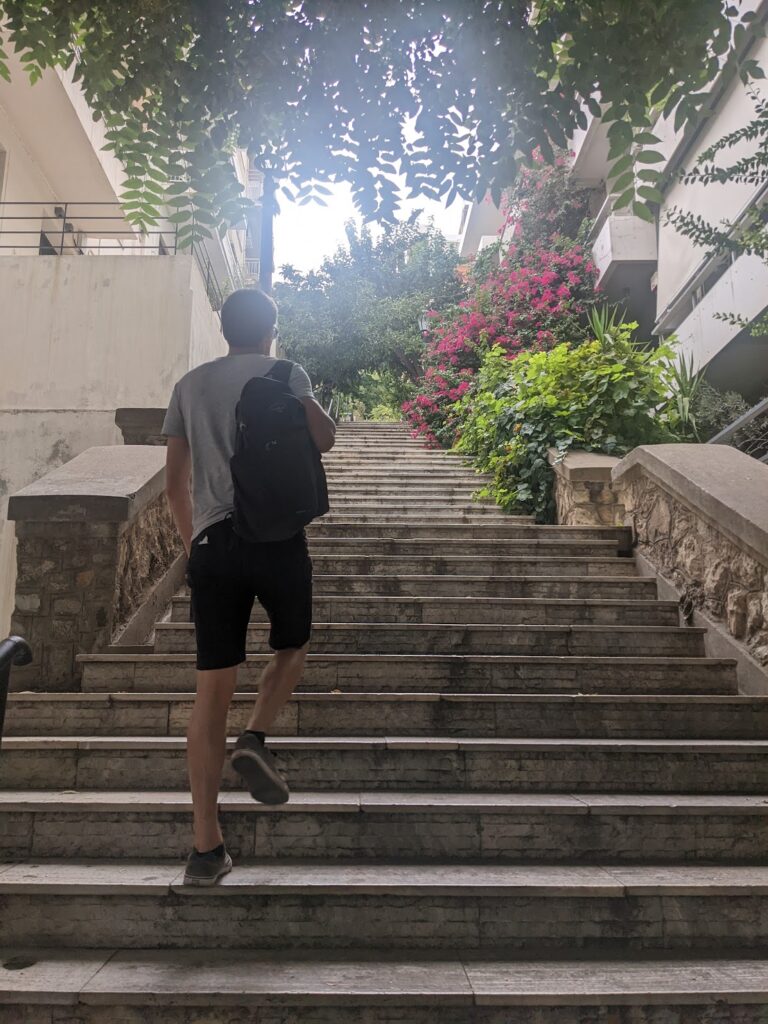
To our surprise, the funicular railway travelled underground all the way to the hill’s summit, some 277m above sea level. We emerged from the upper station into a torrential downpour, and while the other passengers made a run for the cafe, we joined a sweet little cat sheltering under a tree. Although heavy, the downpour didn’t last long, and the sun was shining again across the city before we knew it.

Unlike most other people who took the funicular, we were far too cheap to buy a return ticket so planned to walk down. And actually, this was even more enjoyable than the view from the church at the top – we passed huge cacti and every turn in the path focused the view on a different part of the city in a new light, keeping us entertained as we descended.
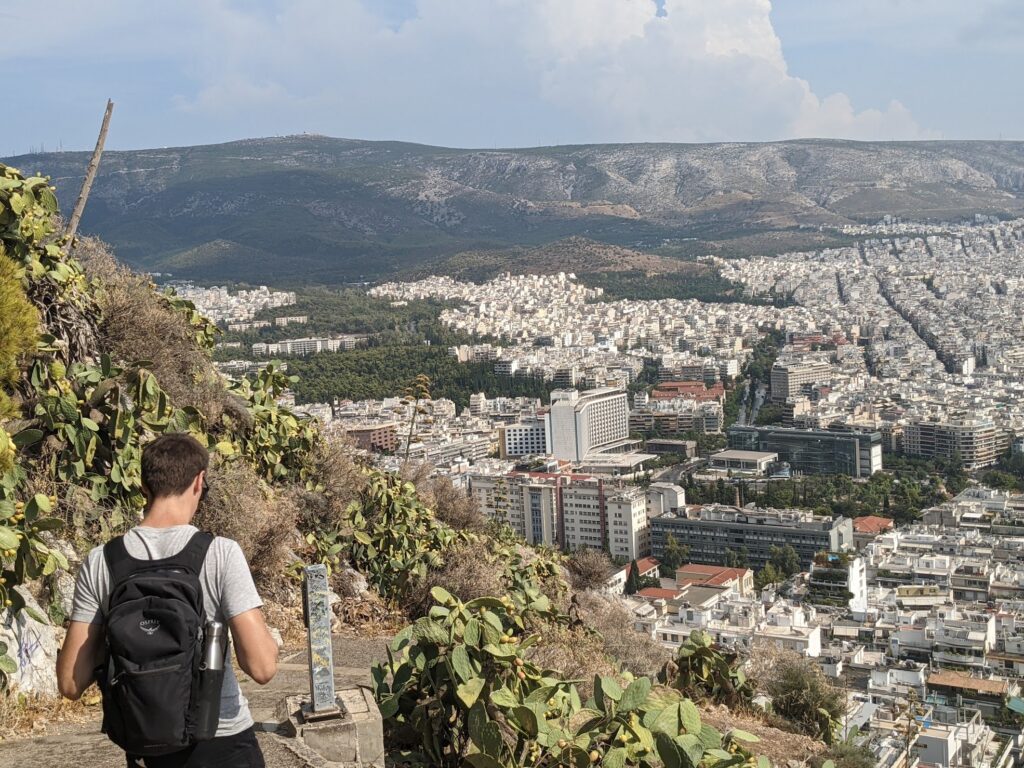
In addition to the many Acropolis viewings, we did our best to make the most of our time in a big city once again – more on this in Part II.




